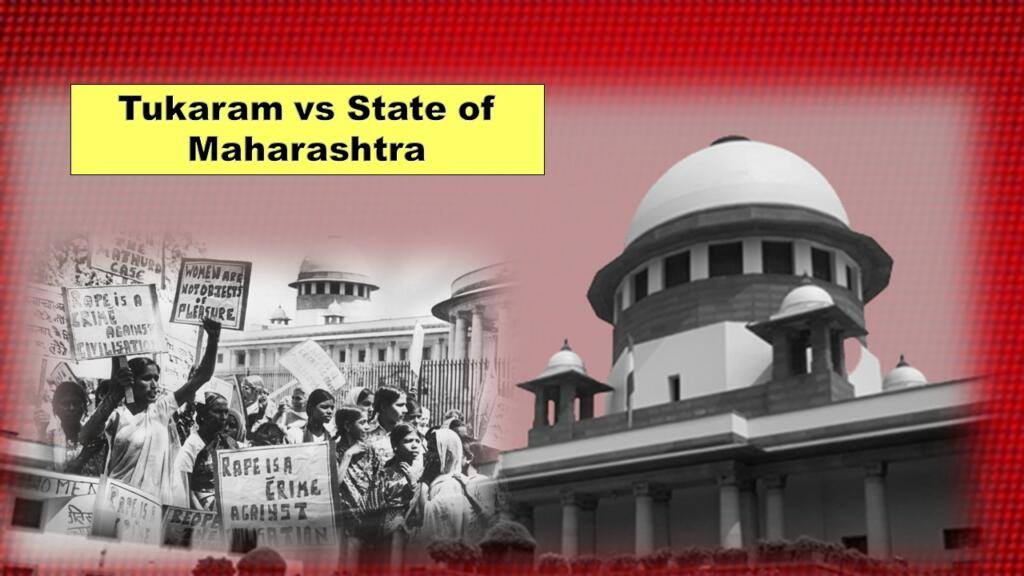Tukaram vs State of Maharashtra case: Misandry is rarely mentioned in the public domain. People find it tough to believe that men can be victims as well. Even our legal system does not accept this evolutionary truth. The blind spot leads us towards introducing the very concept at the behest of punishing a few rotten apples.
Mathura rape case and derogatory views of the Sessions Court
In 1972, a girl named Mathura was allegedly raped by two policemen inside the police station. In the complaint, she alleged that when she was going out of the police station with her relatives, constables named Ganpat and Tukaram asked her to wait. Thereafter, she was taken to the washroom of the police station and was raped by Ganpat and Tukaram.
The Sessions court took the contrary view and held that Tukaram vs State of Maharashtra was a case of consensual sex rather than rape. The court used the perverse logic that she was habituated to sex and might have invited Ganpat for the purpose. Regarding circumstantial evidence, the Court held that the semen on Mathura’s clothes were of another person and not Ganpat. When the question of semen on Ganpat’s cloth was put forward, the Court held that it was due to nightly discharge.
The court was then reminded that she was underage and that under Section 375(6), even consensual sex with her would be rape. In its response, the Sessions court said that the age determination was not adequate for evidence. The Sessions Court went as far as suggesting that Mathura may have concocted the story to appear virtuous to her lover Ashok. The policemen were acquitted.
Also read: Preamble: Evolution from loosely worded guideline to Iron-Tight Principle
The Bombay High Court and the Supreme Court stand opposite
Tukaram vs State of Maharashtra case reached the Bombay High Court, which reversed the decision. The High Court ruled that the policemen were in a position of authority and that Mathura’s resistance would prove detrimental to her poor family. The High Court used the term “passive submission,” which is not the same as consent, and hence convicted both policemen.
Both of them appealed to the Supreme Court. The Apex Court studied both the aforementioned judgments, anti-rape provisions in the IPC, and circumstantial evidence. It outlined that the girl did not put up a fight because neither accused had any marks or injury. The Apex Court also agreed that the girl did not shout for help and pointed out that both the Sessions Court and the High Court also agreed to it.
Also read: The 1995 case that cemented the notion of ‘Hinduism is a way of life’ and why it is not right
Apex Court’s observations
Then the question was whether it was a case of passive submission. The Apex Court said No. It relied on Mathura’s own testimony to prove its point. Mathura had alleged that she was forcibly taken while leaving the police station. Court refused to believe that she would be so over-awed by the policemen’s authority that she wouldn’t resist them taking her away. In Apex Court’s eyes, her brother, lover, and aunt were right there, but she did not invoke them.
The second reason why the court did not assume it was a sexual act of “passive submission” but instead “consensual” is that Mathura and her lawyers could not prove it. The onus of proof was on her.
Also read: The spineless “Juvenile Justice Act” needs an immediate upgrade
Introduction of misandry
This became a bone of contention for various legal luminaries as well as feminists. Upendra Baxi, Raghunath Kelkar, Lotika Sarkar, and Vasudha Dhagamwa wrote an open letter to the SC for rehearing. The court refused, but it paved the way for nationwide resistance against the Consent clause.
The government listened to the public outcry and enacted THE CRIMINAL LAW (AMENDMENT) ACT, 1983. The onus of proof has now shifted to the accused. Apart from introducing Marxist oppressor vs oppressed doctrine in anti-rape provisions, it also added Section 114(A) of the Evidence Act. The onus of proof now shifted to the accused. Simply put, Section 114(A) of the Evidence Act compels courts to assume that a woman is telling the truth when she says that she did not consent to sexual intercourse with a man.
Also read: Aruna Ramchandra Shanbaug vs. Union of India: The case that paved the way for Passive euthanasia
Need to punish false accusers
The amendment was well-intentioned and the need of the hour. But the problem is that it has not evolved with the times. The provision has been misused a lot in the 21st century. As TFI reported, it has become a tool to harass innocent men. NCRB data once informed us that 74 percent of rape cases are false.
A large section of these are consensual relationships gone haywire, with girls using the provision to browbeat the man. She only needs to say she was raped and her former lover will rot in jail for years.
The times have changed, and so has our mentality. In order to keep sensitivity around the rape alive, misuse of the provision needs to stop. For that, a penal provision for false accusations needs to be made.
Support TFI:
Support us to strengthen the ‘Right’ ideology of cultural nationalism by purchasing the best quality garments from TFI-STORE.COM
Also Watch:
https://www.youtube.com/watch?v=vNRLOFtSub0
